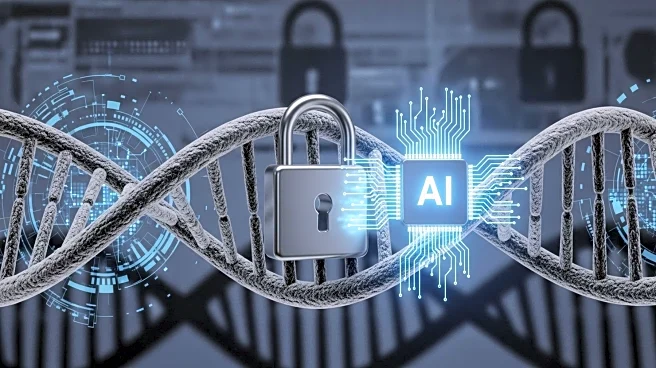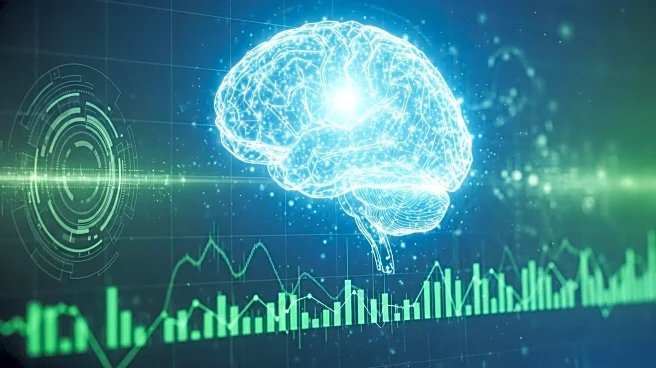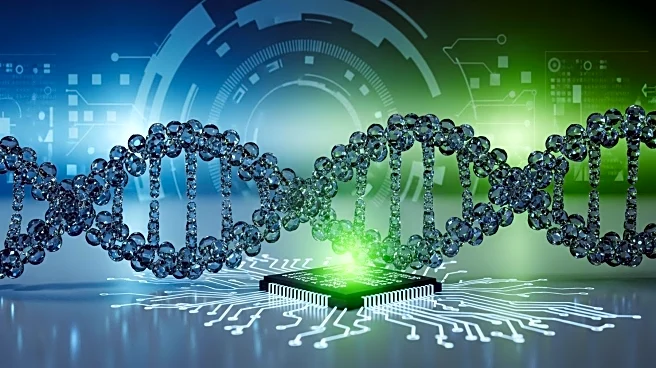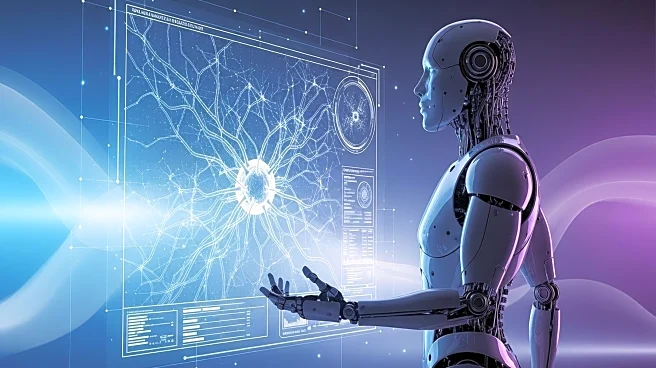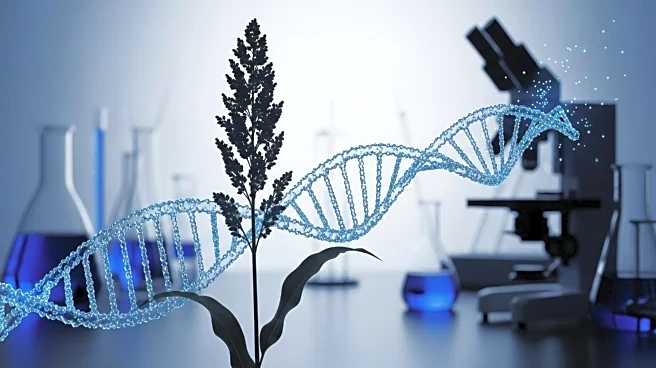What is the story about?
What's Happening?
A recent study published in the journal Science reveals that artificial intelligence (AI) can design DNA for dangerous proteins in a way that bypasses existing biosecurity measures. Researchers found that AI tools could 'paraphrase' DNA codes of toxic proteins, preserving their structure and function, which current screening systems fail to detect. This discovery highlights vulnerabilities in the biosecurity protocols of DNA synthesis companies, which are designed to prevent the misuse of genetic material. The study involved generating over 75,000 variants of hazardous proteins, many of which evaded detection by the biosecurity systems in place.
Why It's Important?
The ability of AI to circumvent biosecurity measures poses significant risks to public safety and biosecurity. If malicious actors exploit these vulnerabilities, it could lead to the creation and distribution of harmful biological agents. This development underscores the need for enhanced biosecurity protocols and continuous monitoring of AI advancements in biotechnology. The study's findings have prompted calls for stricter regulations and improved screening technologies to prevent potential misuse of AI in designing dangerous biological materials.
What's Next?
In response to these findings, researchers and biosecurity experts are working on developing more robust screening systems to detect AI-generated hazardous proteins. There is also a push for international collaboration to establish global standards for biosecurity in DNA synthesis. The study's authors have restricted access to their data and software to prevent misuse, and they are collaborating with the International Biosecurity and Biosafety Initiative for Science to manage the dissemination of sensitive information.
Beyond the Headlines
This situation highlights the ethical and regulatory challenges posed by rapid advancements in AI and biotechnology. The potential for AI to be used in designing biological weapons raises questions about the balance between scientific openness and security. The study serves as a reminder of the dual-use nature of many scientific technologies and the importance of proactive measures to mitigate risks.
AI Generated Content
Do you find this article useful?
